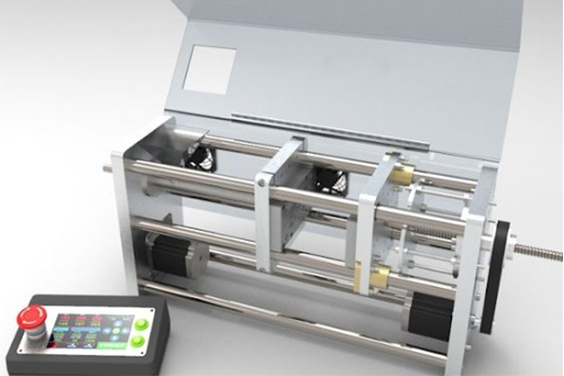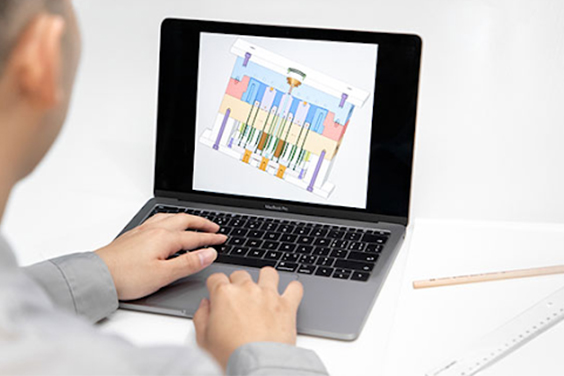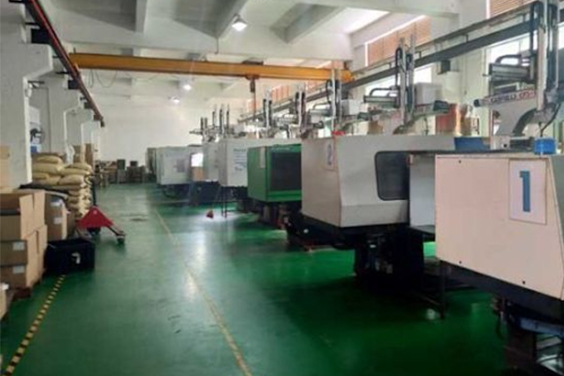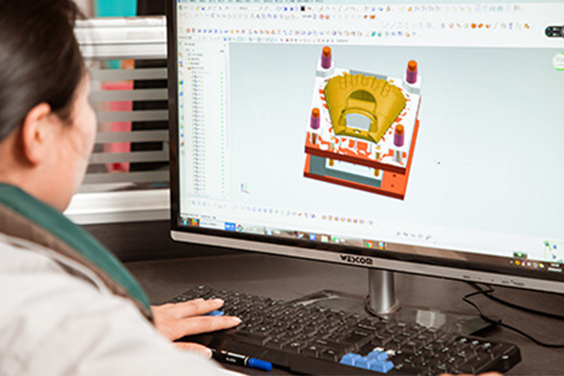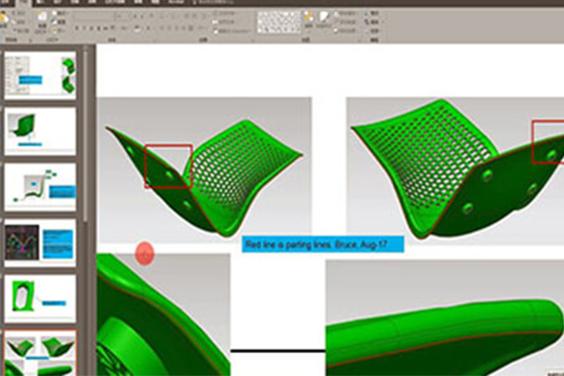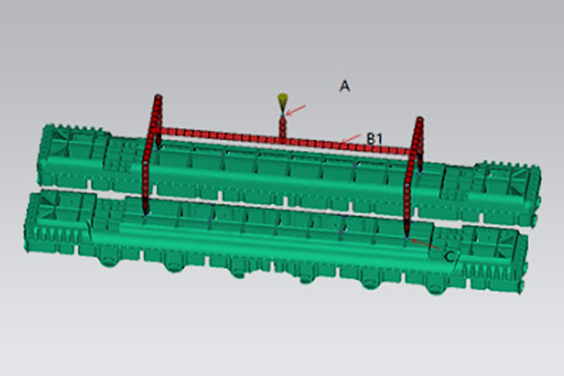Injection Mould Design Basics
- Home
- > Blog
- > Injection Mould Design Basics
Share :
Share :
The major factor of error in plastic injected moulded parts is a poor requirement and material choices, coupled with poor plastic injection mould design and procedure techniques.
Mould warpage and gas trap (previously known as mould fires), voids, short shorts, and numerous other wrong design errors can lead to costly and time-consuming item recalls and component reworking if you don’t understand the principles of plastic injection mould design.
Therefore, we are going to look at the design basics of injection moulding. Let’s get into it.
What is Injection Moulding
Insert moulding is the process of overmoulding a prepared object (typically metal) with a hot thermoplastic resin to create a unique unit. Inserts for moulding might be as simple as rods, thread, or a knife blade, or as complex as a knife blade.
To improve the mechanical properties of plastic parts, many circumstances need the employment of such production procedures.
Insert moulding is generally utilized to create long-lasting and trustworthy moulded items with minimal money and effort investment. This strategy helps to cut down on labour and assembly costs. It also enables producers to take advantage of greater design flexibility without jeopardizing the structural integrity of the product. Due to the lower labour cost and high-quality standards, it is one of the best and economical methods for making lightweight and small elements that are dependable, resilient, and fully functional.
The plastic moulding method needs tremendous precision to ensure that the finished plastic components are properly moulded. A little misalignment might cause the product to completely derail, demanding severe quality control procedures. In reality, the machine-mould tooling relationship is integrally tied to the injection moulding process. Even the most rigorous correctness and maintainability that only insert moulding can manage can be met with high-precision technology.
Injection Design Elements to Consider
Various components arrive at injection moulding in various ways. Some are first prototyped via 3D printing when moldability isn’t a huge factor. Others opt for a more conventional machining approach, which allows for repetitive testing in engineering-grade components in a manner akin to moulding. And a lot of people just leap right into injection moulding.
We’ve learnt the hard way that there are critical design considerations to look out for before manufacturing begins. These could improve the parts’ moldability, lowering the risk of production hitches, cosmetic faults, and other problems.
You need to pay attention to the following:
1. Injection Moulding Designs using Draft and Radii
A correctly designed injection-moulded item requires the use of a draft and radii. Because the material shrinks onto the mould centre, the draft helps a part liberated from a mould with much less drag on the element’s surface. Limited draft necessitates a high level of ejection system pressure, which might damage components and potentially the mould.
A fair rule of thumb is to impart 1 degree of the draft for 1 inch of cavity depth, although based on the substance used and the mould’s characteristics, this may not be enough. The majority of the elements in the mould are milled by CNC at Protolabs. Depending on the end mill we’re employing for each component, the outcome of the production process determines a unique wall thickness and draft angle. The design for manufacturability study comes in handy here because the software examines each part characteristic individually and compares it to the toolkit. The portion geometry where higher draft and density may be required is highlighted in the design study.
Radii, on the contrary, aren’t required for injection moulding but should be used for a few reasons. For starters, reducing sharp edges on your part will increase substance flow and part durability.
Like the course of a stream, the resin entering the mould feels more natural around soft edges. Streams do not have 90-degree edges because the water flow produces inside and outside edges, allowing it to flow freely toward its target. Plastic resin, too, prefers to pursue the path of minimum resistance in order to reduce stress on the substance and mould. Radii, like draft, help with part ejection because curved edges reduce the possibility of the part sticking in the mould and warping or breaking.
2. Wall Breadth and Its Significance
Managing wall breadth during part design lets you monitor your part’s appearance, weight, and toughness. Overly thick parts cause unattractive sink, warp, and interior cavities. To avoid this, substances have prescribed wall thickness guidelines—keep in mind that this is merely guidance, as not all sections will have wall thicknesses at the extremes.
3. Ribbing and Coring Out
Extra variables should be considered in conjunction to correct wall thickness to guarantee that a part’s design integrity is preserved. It’s a common misconception that the thicker a component is, the stronger it is. Ribs and reinforcing gussets, which enhance strength and can assist prevent visual faults like warp, sink, and gaps, should be included in a well designed structural element.
Start by coring out your thick component, which will keep the overall height and broadness of your part while not compromising functionality. There’s a considerable probability you’ll improve the part’s efficiency as well as its aesthetic appeal.
The layout of the support ribs will be our next emphasis. Using a rib-to-wall thickness ratio of 40% to 60% the thickness of neighbouring sections is the best approach to build ribs. The element’s main body should be thick enough that any neighbouring rib ejected from it is approximately half the breadth. This prevents thick areas from cooling at a varying rate than thin layers. It also aids in the reduction of sink and strains that can cause your part to distort.
Ramps and gussets are a whole other design feature that can help to enhance and significantly boost the appearance of your item. Plastic, once again, prefers smooth continuity between shapes, and a tiny ramp aids substance flow between layers. Gussets assist in the stability of walls or embellishments while also decreasing moulding pressure.
4. Undercuts
Isn’t it true that rapid injection moulding necessitates the simplest feasible part design? We offer sophisticated part designs that necessitate undercuts, via the holes, and other characteristics, therefore this is another erroneous presumption.
Accommodating via the pin-actuated side-actions, exterior undercuts are the simplest and most budget-friendly. When the mould is opened and shut down, these side-actions rotate in lockstep with it, whereas the camera rides along with an inclined pin. Whenever the camera is deactivated, the part can be readily withdrawn sans causing mould deterioration, and the shutter shuts until the next part is created.
You can employ mechanically removed inserts in circumstances when side-actions aren’t possible. These are mould elements larger than a half-inch square that is placed into the press by a controller before it shuts. The item, together with the insert, is expelled once it has been formed. The controller then mechanically eliminates the insert from the part and replaces it in the mould for the next piece.
5. Basic-Cavity
The A and B sides, or above and below half of a mould, are commonly referred to as the centre and cavity. A core-cavity technique to component design can save time & expense in the production process while also improving part aesthetics.
Assume you’re creating a simple box. When the draft is given to both the outer and interior sides of a mould half, an extremely deep rib is created, which is hard to make and raises tooling expenses. Owing to the lack of mould venting in the inner rib, it significantly increases the risk of mould deterioration due to the complicated ejection and short shots.
A core-cavity method can help to alleviate all of these difficulties. The exterior and interior walls must be drawn parallel to one another in order to use this design style. This approach indicates a uniform wall thickness, enhances part consistency, increases strength and stretchability, and lowers total production costs.
6. Ejection and Gating
Gating and ejector pins are required for the plastic resin to enter the mould intelligently and for plastic pieces to be expelled successfully. We’ve learned the hard way that there are a few different ways to gate or eject your part, and the positions should be determined prior to you starting tooling.
Tab gates are the most typically utilized since they provide the most manufacturing capabilities for a mould technician and can be enlarged if the process necessitates it. A tab gate is tapered from the sprinter to the part’s surface, with the smallest point at the part’s exterior. This creates a freeze point between the component and the runner, reducing heat from the part’s interface. To reduce the chance of the part sinking, you want to dissipate the heat from this region.
Sub gates are commonly implemented by adding a tunnel gate into the element’s edge or an ejector pin. Both gate types can help to reduce the size of the remnant left on the part’s outside. Tunnel gates still access the part from the outside, but because they are located in the middle of the part’s area, they often leave less of a gate residue. As the component fills via one of the ejector pins near the periphery of the part, post gates leave no visible remnant on the surface. The ornamental shadow left in the contrary direction of the part as a result of heat and part thickness is a risk. So, if you’re putting this on highly cosmetic sections with texture or a high shine, proceed with caution.
Direct spur gates are the least desirable and are only utilized with elevated-glass-content substances or when secondary machining is required in the middle of the product. Straightforward sprue gates have a larger surface area that makes them hard to eliminate mechanically, and they frequently require a fastening that is milled away.
Conclusion
Plastic injection moulding has come a long way since its inception, and it’s now a great technique to mass-produce elements on a huge scale with little labour. Though melting plastic pellets and injecting them into a mould cavity may appear to be a straightforward procedure, there are numerous crucial parts of the design, tooling, and production processes that will necessitate working with an injection moulder that understands how to satisfy your particular criteria.
For the best services, Immould is the company for you. Contact us and our team of professionals will offer exemplary services.


